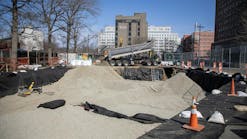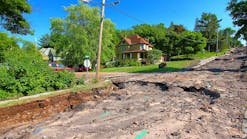ON BLACK FRIDAY—the day after Thanksgiving in the US—the Trump administration released volume 2 of the National Climate Assessment. The federal government publishes a similar assessment every four years, reporting on the latest climate-related findings and their implications. (Volume 1 of the current report came out last year; you can find links to both volumes at www.bit.ly/2Qm6Sdm.)
A notable difference between this most recent report and previous ones is the way it quantifies the economic consequences of climate change. The 13 federal agencies that compiled the more-than-1,600-page report say that the US could see its gross domestic product reduced by as much as 10% by 2100.
One of the specific areas the report touches on is the prevalence of wildfires, something we’ve been dealing with almost constantly in California. It says that because of changes in the climate—increased heat and drought—about twice the area has burned in the last few decades than would have done so otherwise. A New York Times article (www.nyti.ms/2BBODZ2) published a few days after the report was released points out that the severe wildfires are increasing the amount of carbon emissions in the atmosphere so severely that California’s ecosystem—grasslands and forest that should be absorbing carbon dioxide—has put out more greenhouse gases than it has taken in, therefore “becoming a net contributor to the planet’s warming.”
A couple of changes the authors point out in the report’s introduction include the more regional nature of the assessment. “The balance of the report’s focus has shifted from national-level chapters to regional chapters in response to a growing desire for more localized information on impacts,” they say. Does this “How will it affect me?” response to earlier reports mean that people are taking the potential threats more seriously? Conversely, the authors note, “Public input also requested greater international context in the report… A new international appendix presents a number of illustrative examples of how other countries have conducted national climate assessments, putting our own effort into a global context.”
Another change is the attempt to put a dollar amount on what’s happening. In addition to the prediction of a 10% drop in GDP if we continue along the same path, the report breaks down the losses—$118 billion from coastal property damage, for example, a sobering number for those of us involved in some way with preventing and mitigating coastal erosion—but also compares the projected losses if we do nothing versus the losses if we take steps to mitigate the damage.
Why the emphasis on economics instead of, say, on effects on human health or the environment? (Although of course these are all interconnected, and the report does devote significant space to these issues as well.) Given that the current administration has been pursuing policies of environmental deregulation, do you think the new report’s stronger emphasis on economic consequences will have an effect on policy decisions going forward?
The US report was released at about the same time a United Nations assessment was published, showing that although the goals of the Paris climate agreement would have global carbon dioxide emissions peaking by 2020, a severe gap exists and we’re not likely to peak even by 2030. You can see a summary of that report at www.bbc.in/2ShKFKW.
Janice Kaspersen
Janice Kaspersen is the former editor of Erosion Control and Stormwater magazines.






